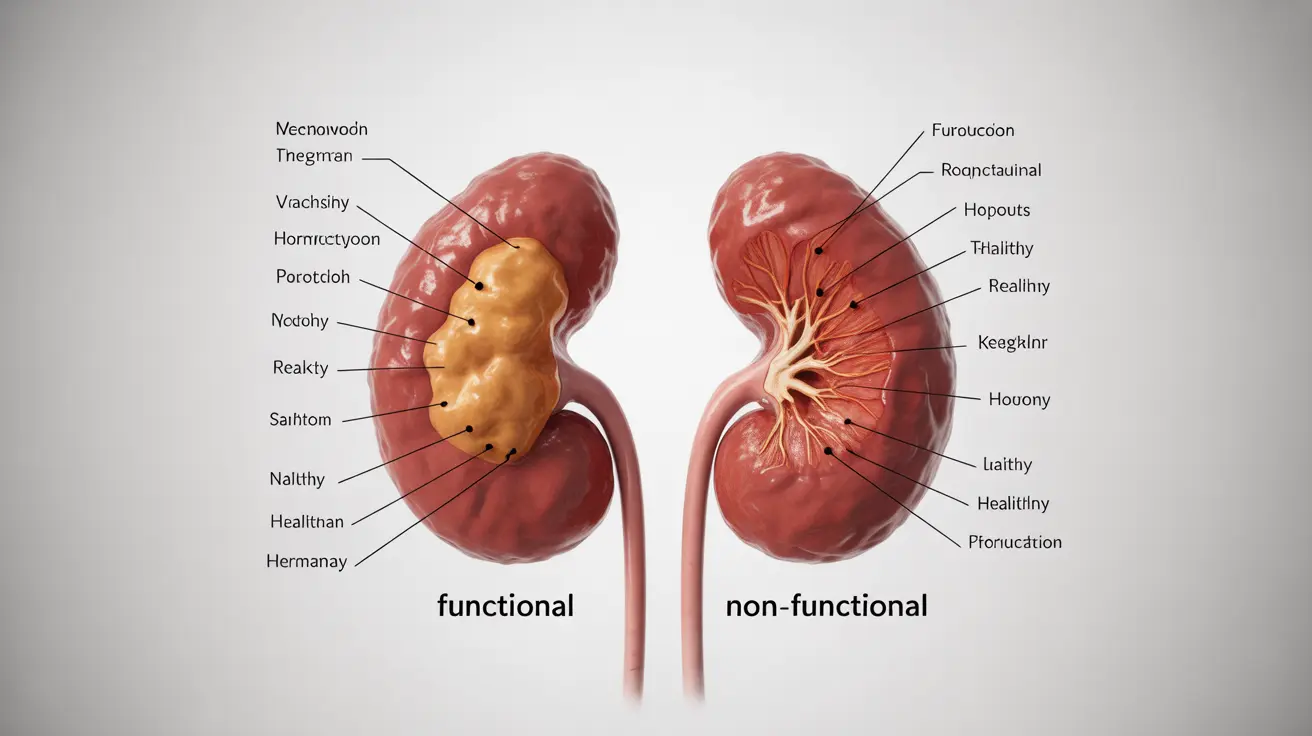Adrenal adenomas are benign tumors that develop in the adrenal glands, which sit atop your kidneys. While many people with these tumors experience no symptoms, others may face significant health challenges due to excess hormone production. Understanding the symptoms and implications of adrenal adenomas is crucial for proper diagnosis and treatment.
These tumors are categorized into two main types: functional (hormone-producing) and non-functional (non-hormone-producing). Each type presents different challenges and requires specific medical attention.
Types of Adrenal Adenomas and Their Effects
Adrenal adenomas can significantly impact your health depending on whether they produce hormones and what type of hormones they release. Understanding these distinctions is essential for proper medical care.
Functional Adenomas
Functional adenomas actively produce hormones, potentially leading to various health complications. These tumors may produce excess:
- Cortisol (Cushing's syndrome)
- Aldosterone (Conn's syndrome)
- Catecholamines
- Androgens (male hormones)
Non-functional Adenomas
Non-functional adenomas don't produce excess hormones and typically don't cause symptoms. However, if they grow large enough, they may cause:
- Abdominal pain
- Back pain
- Feeling of fullness
- Pressure symptoms
Key Signs and Symptoms to Watch For
The symptoms of adrenal adenomas vary significantly based on the hormones they produce. Here are the most common manifestations:
Cortisol-producing Adenomas
When adenomas produce excess cortisol, you might experience:
- Weight gain, especially in the face and trunk
- Purple stretch marks
- Muscle weakness
- High blood pressure
- Easy bruising
- Mood changes
Aldosterone-producing Adenomas
These adenomas can cause:
- Severe high blood pressure
- Low potassium levels
- Muscle weakness
- Frequent urination
- Headaches
Diagnosis and Detection
Doctors typically discover adrenal adenomas through various methods:
- Imaging tests (CT scans, MRI)
- Blood hormone level testing
- Urine tests
- Adrenal vein sampling
Treatment Approaches
Treatment options vary depending on the type of adenoma and its symptoms:
Surgical Options
Laparoscopic adrenalectomy is often recommended for:
- Functional adenomas causing symptoms
- Large tumors (typically > 4 cm)
- Tumors showing suspicious features
Medical Management
Non-surgical treatments may include:
- Medication to control hormone production
- Regular monitoring for non-functional adenomas
- Blood pressure management
- Hormone replacement therapy when needed
Frequently Asked Questions
What are the common symptoms of a functional adrenal adenoma? Common symptoms include weight gain, high blood pressure, muscle weakness, mood changes, and easy bruising. The specific symptoms depend on which hormones the adenoma produces.
How is an adrenal adenoma diagnosed and distinguished from cancer? Diagnosis involves imaging tests like CT scans or MRI, along with hormone level testing. Doctors look at the tumor's size, appearance, and growth pattern to distinguish it from cancer. Additional testing may include blood work and urine analysis.
What treatment options are available for hormone-producing adrenal adenomas? Treatment options include surgical removal through laparoscopic adrenalectomy, medication to control hormone production, and regular monitoring. The specific treatment depends on the type and size of the adenoma.
Can a non-functional adrenal adenoma turn into a hormone-producing tumor? While rare, non-functional adenomas can potentially become hormone-producing over time. This is why regular monitoring is important, even for non-functional tumors.
What symptoms indicate excess hormone production from an adrenal adenoma? Symptoms of excess hormone production include unexplained weight gain, high blood pressure, muscle weakness, mood changes, easy bruising, and in some cases, masculinization in women or feminization in men.




